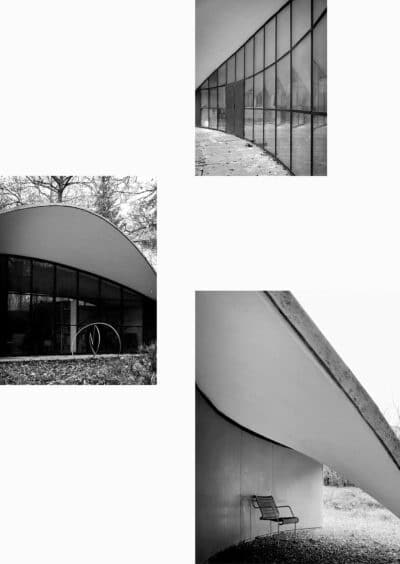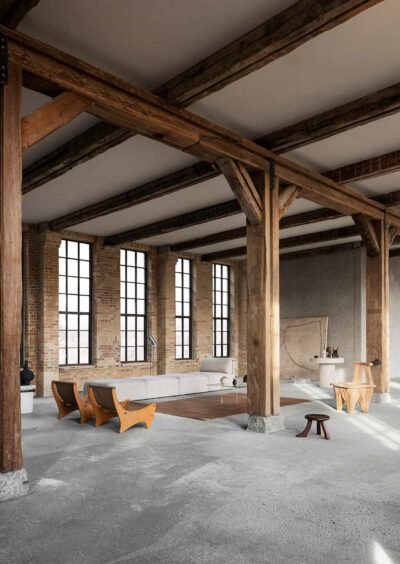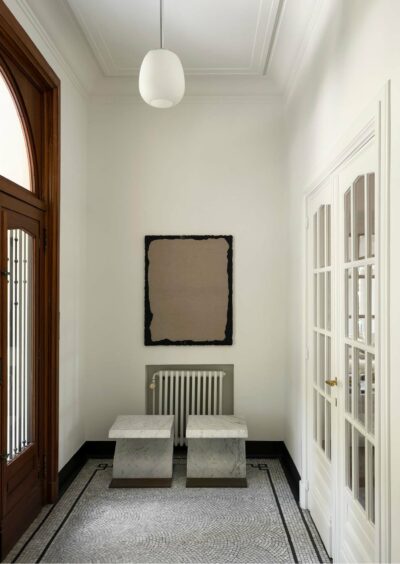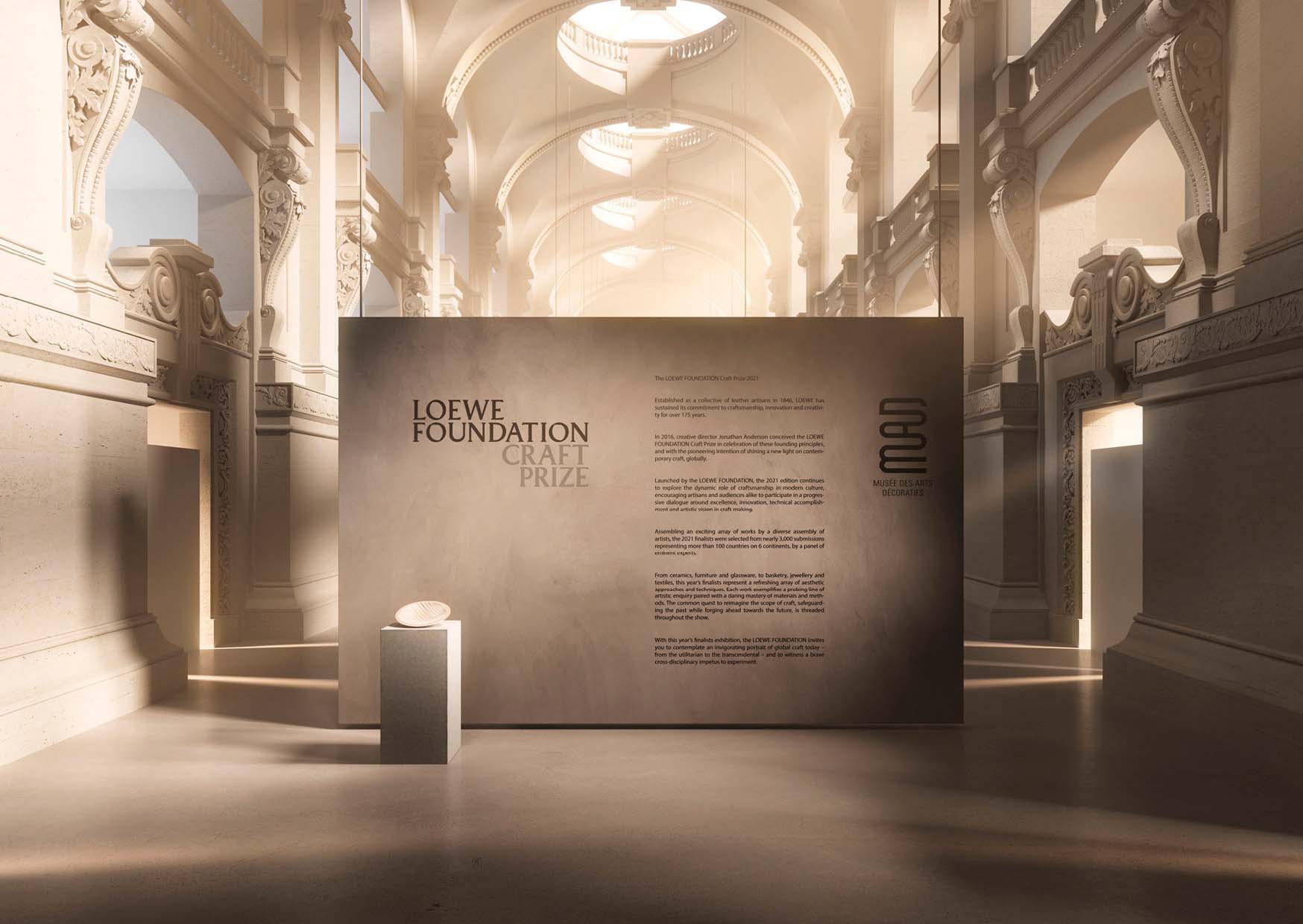
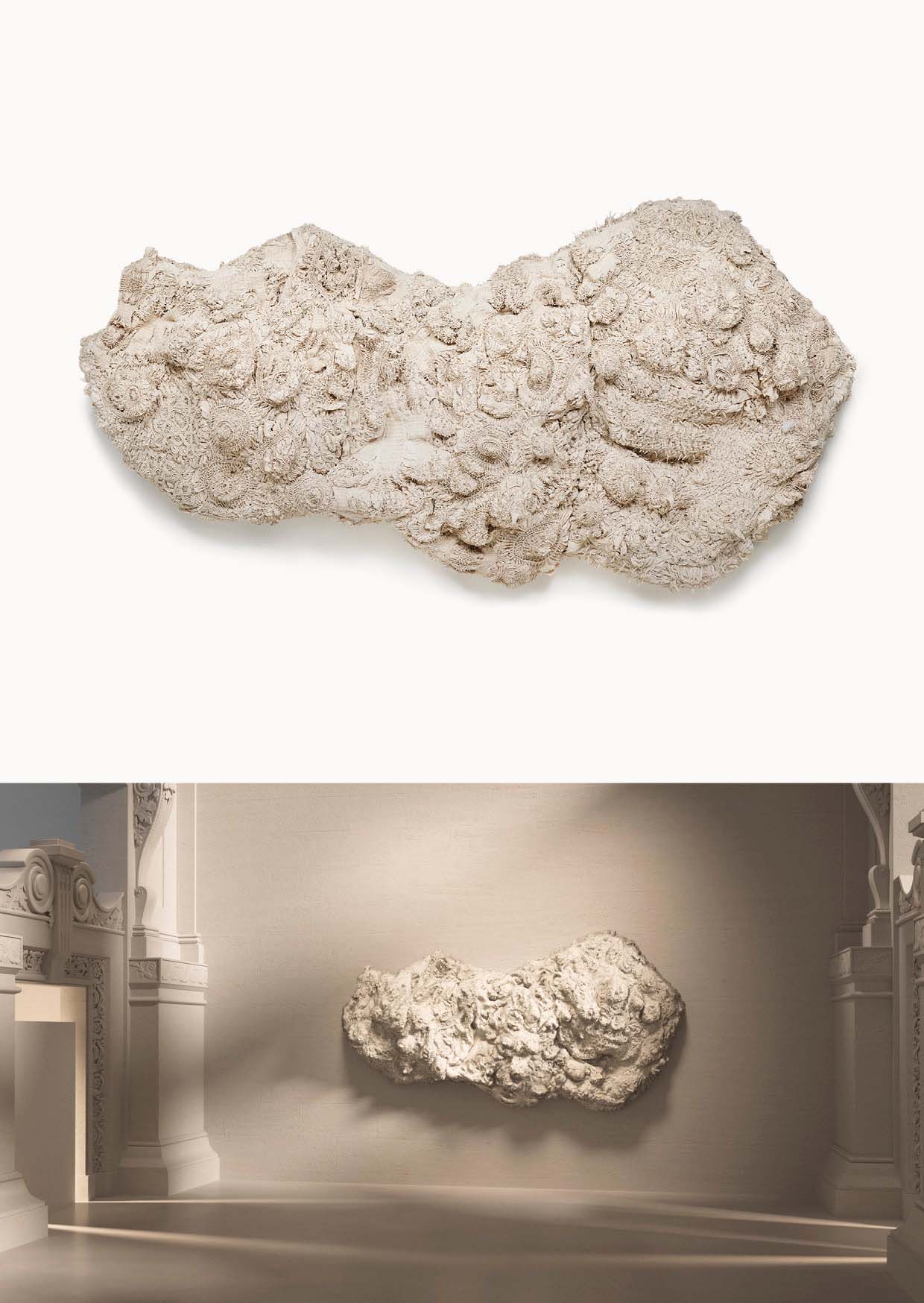
Winner 2021:
Fanglu Lin, China, ‘SHE’, 2016, cloth and wood.
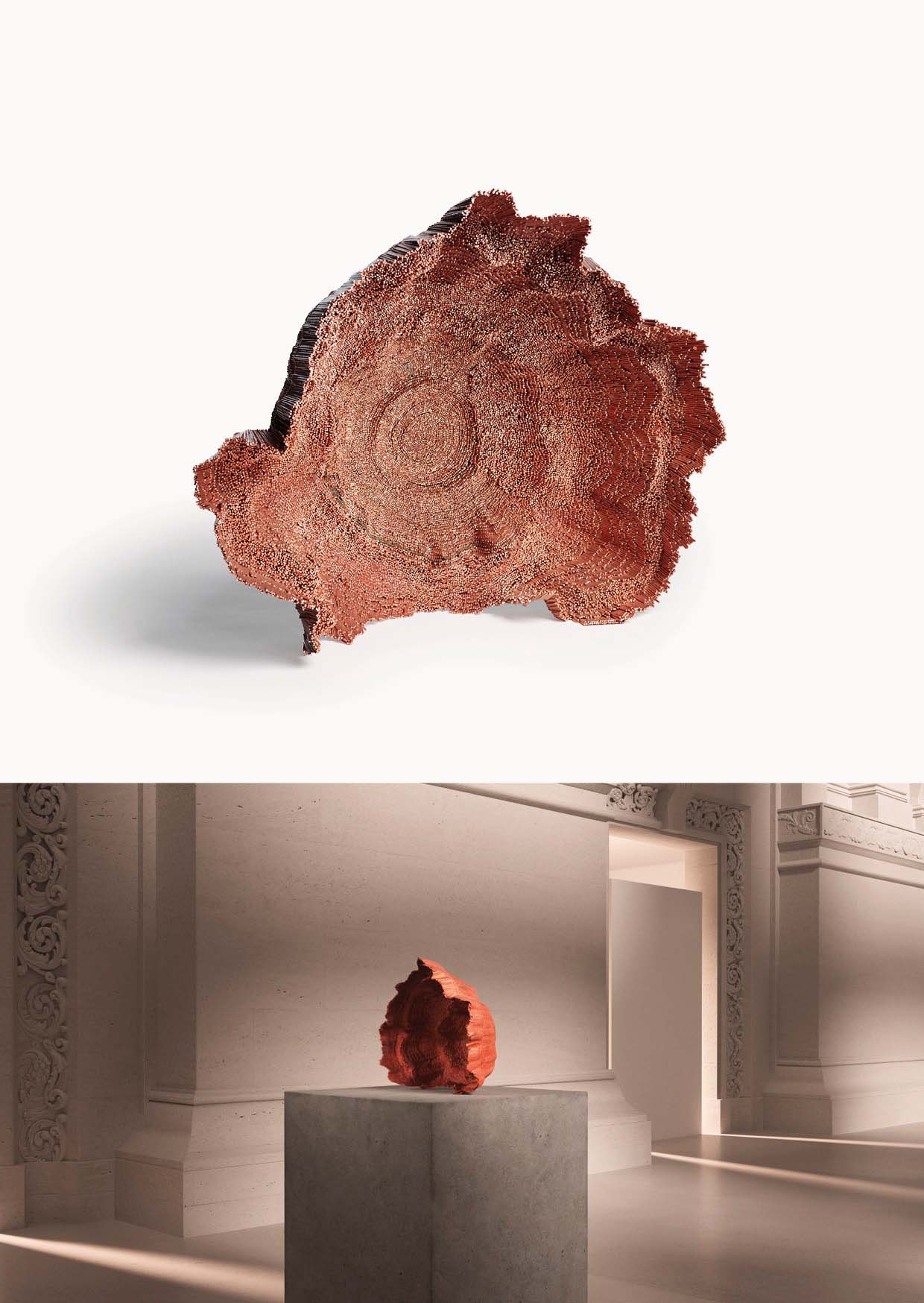
Special Mention 2021:
David Corvalán, Chile, ‘Desértico II’, 2019, copper wire and epoxy resin.
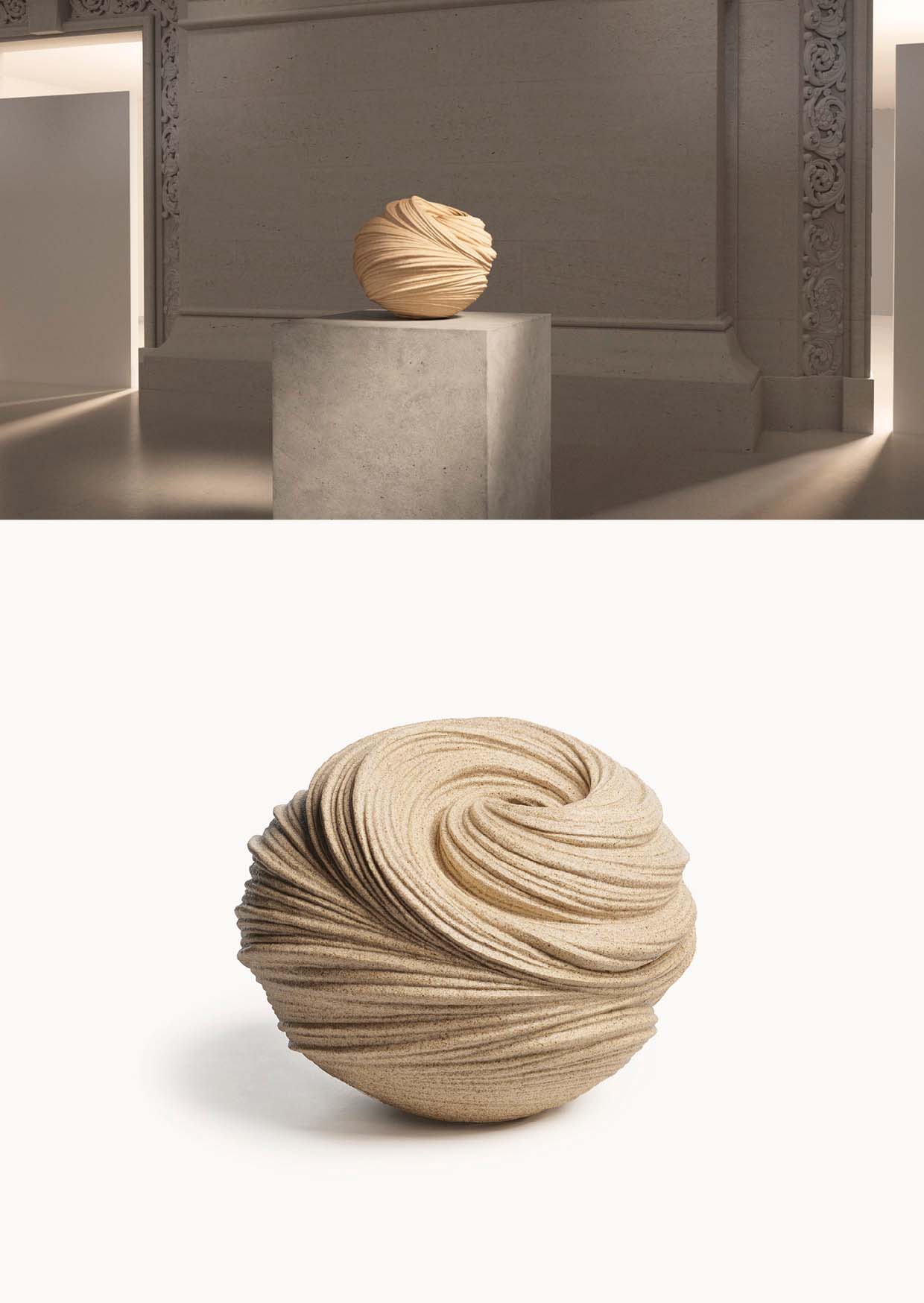
Special Mention 2021:
Takayuki Sakiyama, Japan, ‘Chōtō: Listening to the Waves’, 2019, stoneware.
EXPECT THE UNEXPECTED
— LOEWE FOUNDATION CRAFT PRIZE
Design
Promoting modernisation of tradition within the realm of craft, the Loewe Foundation Craft Prize 2022 is now open for submissions. Ark Journal talked to Chairperson of the Jury, Anatxu Zabalbeascoa, about contemporary craft and it’s impact through the fifth edition of the award.
A global prize introduced to acknowledge the importance of craft in contemporary culture, the Loewe Foundation Craft Prize recognises working artisans whose talent, vision and will to innovate sets a standard for the future.
Launched in 2016, the Loewe Foundation Craft Prize was conceived by Creative Director Jonathon Anderson to herald exceptional displays of creative vision across the arts, and a nod to the history of Loewe as a collective craft workshop founded in 1846.
The role of the Loewe Foundation, established in 1988 as a private cultural foundation by Enrique Loewe, a fourth-generation member of the family, is to promote creativity and protect cultural heritage in the fields of poetry, dance, photography, design, art and craft. Having joined Loewe as creative director in 2013, Jonathon Anderson furthered the outreach of the foundation with the introduction of the Craft Prize, in turn underlining his own focus on contemporising craft within Loewe and his plans to uplift pioneering workshops of others.
Since its inception the Loewe Foundation Craft Prize has grown and evolved – nearly 3,000 submissions from 107 countries were received for the 2021 edition – a momentum fuelled by the lateral involvement of artisans spanning the globe.
Chairperson of the Jury, Anatxu Zabalbeascoa, the architecture and design correspondant for El Pais, told Ark Journal that while standards of quality had remained consistently inspirational, it was this global interaction that she found inspiring about the growth of the award.
“There has been an evolution in terms of variety, through the range of artisans from different countries that are applying, and therefore a plurality that we are able to show in our exhibitions, in terms of materials, nationalities, typologies, categories. The task of being able to see so much variety from so many different areas of the world has taught us that we can expect the unexpected. For instance, we have been receiving applications from women in Iran creating political textiles, which aren’t looking simply to aesthetics but are also looking to update tradition.”
From the beginning, the purposes of the award included celebrating contemporary interpretations and the role craft plays in society, which enable the parallel roles of timelessness, tradition and contemporisation to entwine.
For Jonathan Anderson, “Craft is always going to be modern. It is about creating objects that have a formula of their own and speak their own language, creating a dialogue that didn’t exist before. It is about newness as much as it is about tradition.”
From Zabalbeascoa’s perspective, the prize was started also as a response to the high-octane throwaway culture of the modern world; the craft prize was an opportunity for timeless appreciation.
“In our opinion, when we first started the prize we believed that craft is something that you don’t throw away,” she says. “This as a concept in contemporary culture is something distinct because we have too many things – too many pencils, too many umbrellas, too many glasses – we forgot where we left them. If you decide to buy a piece of ceramics, you don’t forget where you put it. It doesn’t mean that craft needs to be necessarily expensive, but it allows craft to go against the throwing away culture and it helps us update tradition.”
It is this aim of updating tradition that has seen the Craft Prize push to ensure tradition is both preserved but also furthered, advocating the award across the world within schools as much as with leading experts. “We did a lot of research before we launched the Craft Prize, through exploring the oldest and longest-standing fairs that have been holding these expositions for decades. We went to both these fairs as well as newer fairs, but we went further as we really wanted to reach the world. We have been talking to schools and teachers in Latin America, and also experts in Asia,” says Zabalbeascoa.
A panel and a jury composed of artists, artisans, essayists, curators and designers – including Naoto Fukasawa, designer and director of the Japanese Folk Crafts Museum Tokyo; Deyan Sudjic, former co-director of the Design Museum London; and Olivier Gabet, director of the Musée des Arts Decoratifs – reviews all applications and a shortlist of 30 submissions is selected.
What encompasses winning traits for these figureheads in fields that include ceramics, bookbinding, jewellery, furniture and many other applied arts? Key criteria include originality, clear artistic vision and merit, the updating of tradition, precise execution, material excellence, innovative value and a distinctive authorial mark. “What we look for is skills and boldness, people who work extremely hard with a lot of expertise but that are willing to go a bit further, to take risks,” says the jury chair. “How I put it to the experts when we get together for the three days of judging, what we look for is when people enter our exhibition to think ‘Wow’ and to feel a familiarity to what they are seeing, but that they would never have expected to see a piece to that degree of skill.”
While the award is still within its early years, its growth is a telling sign of the importance of spotlighting craft in order to preserve the breadth of exceptional skill and talent that exists today. What does Zabalbeascoa envision as the prospects of the Loewe Foundation Craft Prize?
“What we hope for in the future is something that we cannot even imagine. We are extremely happy when we receive applications from unexpected places in the world. We are very lucky in terms of gender as we often have more women than men applying, and we are very happy in terms of age. It is quite amazing, we have people who are as young as 19, going up until appliants aged 89. Where else in the world do you have this range applying for the same thing?”
The Loewe Foundation Craft Prize 2022 applications are open until October 25, 2021.
The winner will be announced in Seoul in spring 2022 as part of an exhibition of shortlisted works.
STUDIO YK
Yrjö Kukkapuro lives as he designs, with a pragmatism that never compromises on experimentation and imagination, and he is a cornerstone of contemporary Finnish design and visual culture.
CASE STUDY — INVENTIVE CRAFT
Today’s makers transcend time and space to mould their vision, imbuing objects with meaning and materiality.
TAILORED INTERIOR
In the small Belgian village of Itegem, interior architect Peter Ivens discovered a unique and exotic villa with well-preserved 1920’s details reminiscent of a classical British colonial style – a central stairway, symmetrical plan, alcove windows, hipped roof and upper dormer windows.

EXPECT THE UNEXPECTED
— LOEWE FOUNDATION CRAFT PRIZE
Design
Promoting modernisation of tradition within the realm of craft, the Loewe Foundation Craft Prize 2022 is now open for submissions. Ark Journal talked to Chairperson of the Jury, Anatxu Zabalbeascoa, about contemporary craft and it’s impact through the fifth edition of the award.
A global prize introduced to acknowledge the importance of craft in contemporary culture, the Loewe Foundation Craft Prize recognises working artisans whose talent, vision and will to innovate sets a standard for the future.
Launched in 2016, the Loewe Foundation Craft Prize was conceived by Creative Director Jonathon Anderson to herald exceptional displays of creative vision across the arts, and a nod to the history of Loewe as a collective craft workshop founded in 1846.
The role of the Loewe Foundation, established in 1988 as a private cultural foundation by Enrique Loewe, a fourth-generation member of the family, is to promote creativity and protect cultural heritage in the fields of poetry, dance, photography, design, art and craft. Having joined Loewe as creative director in 2013, Jonathon Anderson furthered the outreach of the foundation with the introduction of the Craft Prize, in turn underlining his own focus on contemporising craft within Loewe and his plans to uplift pioneering workshops of others.
Since its inception the Loewe Foundation Craft Prize has grown and evolved – nearly 3,000 submissions from 107 countries were received for the 2021 edition – a momentum fuelled by the lateral involvement of artisans spanning the globe.
Chairperson of the Jury, Anatxu Zabalbeascoa, the architecture and design correspondant for El Pais, told Ark Journal that while standards of quality had remained consistently inspirational, it was this global interaction that she found inspiring about the growth of the award.
“There has been an evolution in terms of variety, through the range of artisans from different countries that are applying, and therefore a plurality that we are able to show in our exhibitions, in terms of materials, nationalities, typologies, categories. The task of being able to see so much variety from so many different areas of the world has taught us that we can expect the unexpected. For instance, we have been receiving applications from women in Iran creating political textiles, which aren’t looking simply to aesthetics but are also looking to update tradition.”
From the beginning, the purposes of the award included celebrating contemporary interpretations and the role craft plays in society, which enable the parallel roles of timelessness, tradition and contemporisation to entwine.
For Jonathan Anderson, “Craft is always going to be modern. It is about creating objects that have a formula of their own and speak their own language, creating a dialogue that didn’t exist before. It is about newness as much as it is about tradition.”
From Zabalbeascoa’s perspective, the prize was started also as a response to the high-octane throwaway culture of the modern world; the craft prize was an opportunity for timeless appreciation.
“In our opinion, when we first started the prize we believed that craft is something that you don’t throw away,” she says. “This as a concept in contemporary culture is something distinct because we have too many things – too many pencils, too many umbrellas, too many glasses – we forgot where we left them. If you decide to buy a piece of ceramics, you don’t forget where you put it. It doesn’t mean that craft needs to be necessarily expensive, but it allows craft to go against the throwing away culture and it helps us update tradition.”
It is this aim of updating tradition that has seen the Craft Prize push to ensure tradition is both preserved but also furthered, advocating the award across the world within schools as much as with leading experts. “We did a lot of research before we launched the Craft Prize, through exploring the oldest and longest-standing fairs that have been holding these expositions for decades. We went to both these fairs as well as newer fairs, but we went further as we really wanted to reach the world. We have been talking to schools and teachers in Latin America, and also experts in Asia,” says Zabalbeascoa.
A panel and a jury composed of artists, artisans, essayists, curators and designers – including Naoto Fukasawa, designer and director of the Japanese Folk Crafts Museum Tokyo; Deyan Sudjic, former co-director of the Design Museum London; and Olivier Gabet, director of the Musée des Arts Decoratifs – reviews all applications and a shortlist of 30 submissions is selected.
What encompasses winning traits for these figureheads in fields that include ceramics, bookbinding, jewellery, furniture and many other applied arts? Key criteria include originality, clear artistic vision and merit, the updating of tradition, precise execution, material excellence, innovative value and a distinctive authorial mark. “What we look for is skills and boldness, people who work extremely hard with a lot of expertise but that are willing to go a bit further, to take risks,” says the jury chair. “How I put it to the experts when we get together for the three days of judging, what we look for is when people enter our exhibition to think ‘Wow’ and to feel a familiarity to what they are seeing, but that they would never have expected to see a piece to that degree of skill.”
While the award is still within its early years, its growth is a telling sign of the importance of spotlighting craft in order to preserve the breadth of exceptional skill and talent that exists today. What does Zabalbeascoa envision as the prospects of the Loewe Foundation Craft Prize?
“What we hope for in the future is something that we cannot even imagine. We are extremely happy when we receive applications from unexpected places in the world. We are very lucky in terms of gender as we often have more women than men applying, and we are very happy in terms of age. It is quite amazing, we have people who are as young as 19, going up until appliants aged 89. Where else in the world do you have this range applying for the same thing?”
The Loewe Foundation Craft Prize 2022 applications are open until October 25, 2021.
The winner will be announced in Seoul in spring 2022 as part of an exhibition of shortlisted works.

Winner 2021: Fanglu Lin, China, ‘SHE’, 2016, cloth and wood.

Special Mention 2021: David Corvalán, Chile, ‘Desértico II’, 2019, copper wire and epoxy resin.

